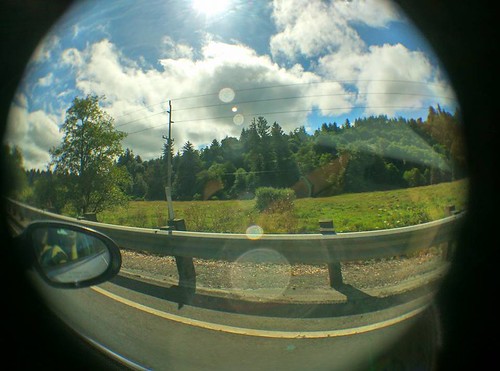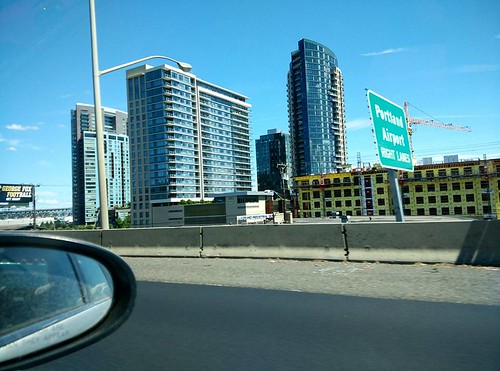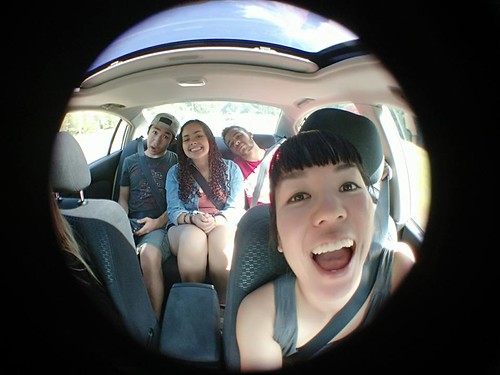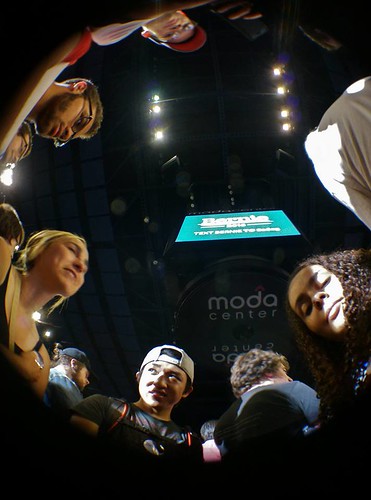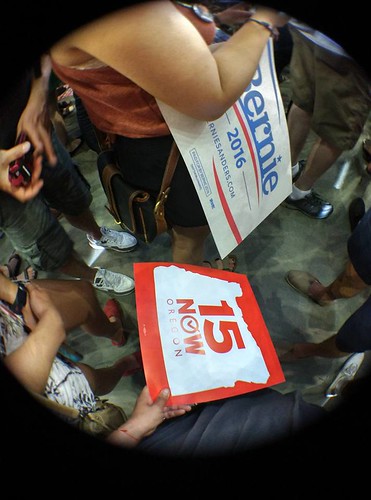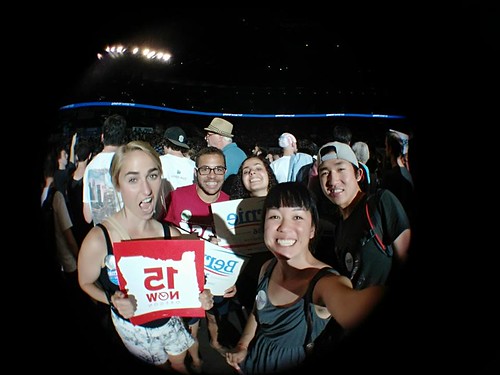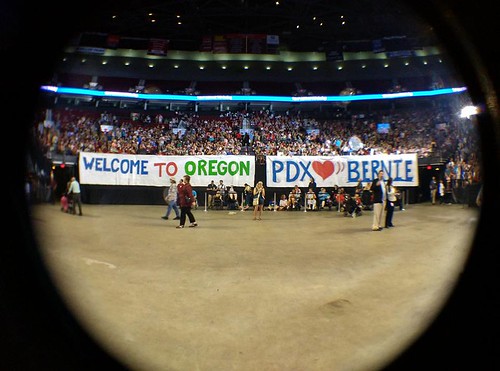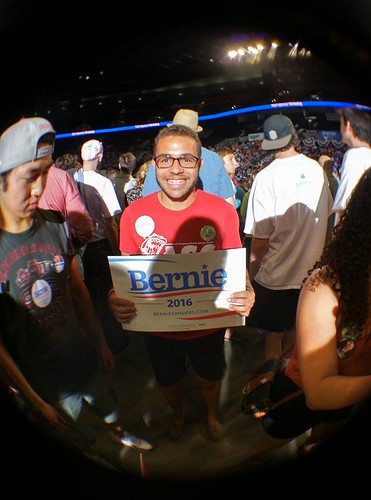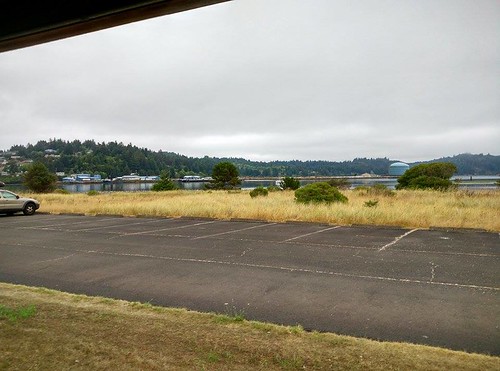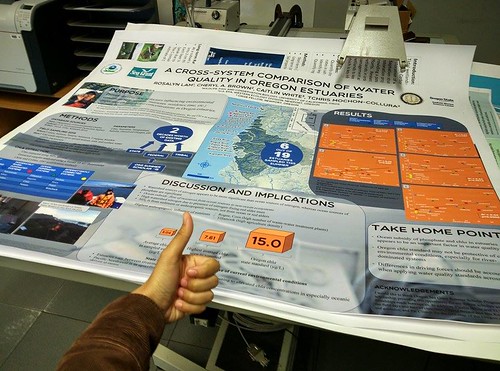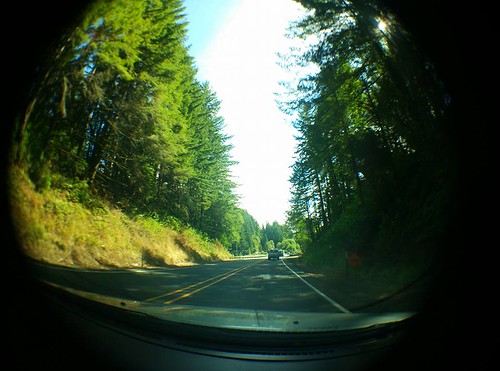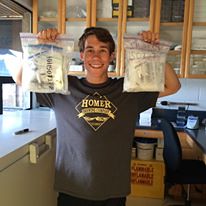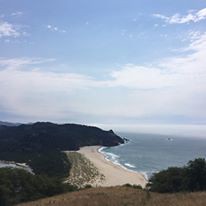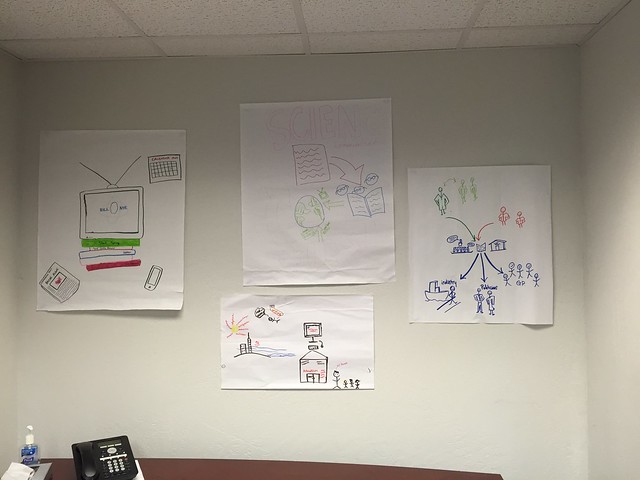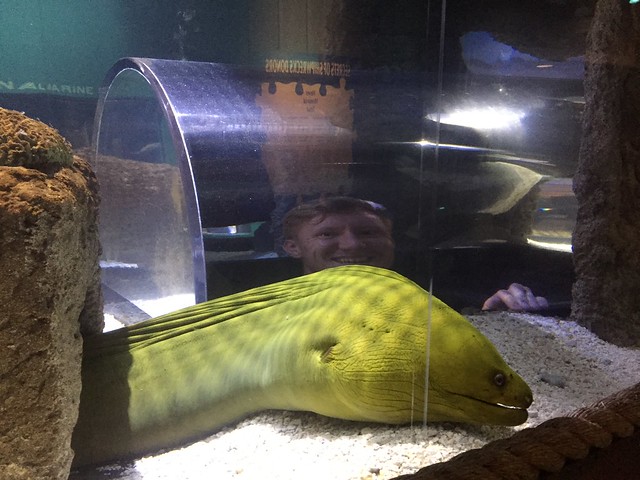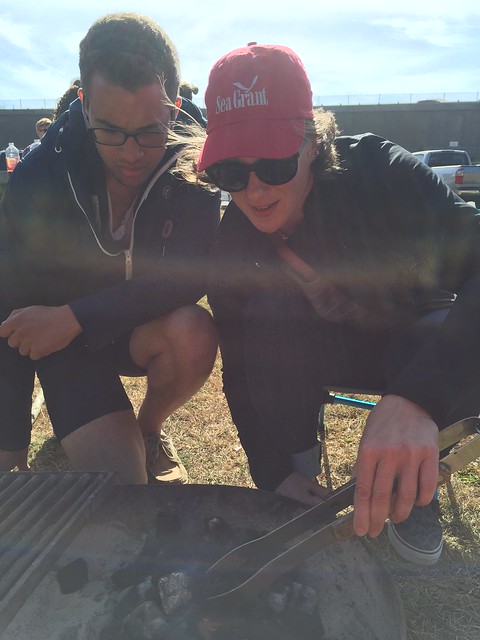The 2015 Annual Conference for the Oregon Chapter of the American Planning Association starts today, and I will be there to talk about the SRGP. Mostly, I’ll be talking about how the SRGP is currently accepting applications until the end of 2015. Check here for more updates on application procedures.
Category Archives: Uncategorized
Oregon Coast Economic Summit
The Oregon Coast Economic Summit was a huge success! Even Governor Kate Brown showed up!
An ideal Saturday and more
I processed my last batch of samples from field work at Alsea from last week. It was strange to know this was the last time I would be in this fume hood. Working in the dark for the last time.
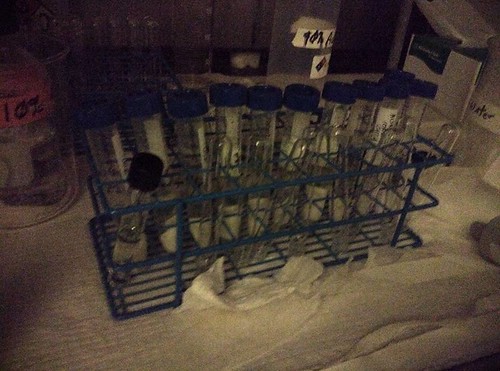
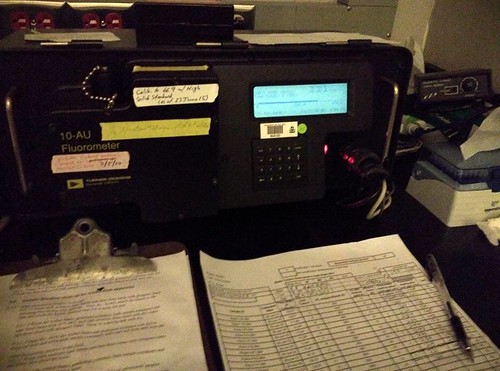
In other news, at Bier One this week, there were didgeridoo performances! Crazy cool stuff. I had never seen a didgeridoo performance before, and it was really cool to hear this instrument I had only heard about/seen on movies/TV shows.
In addition, seeing this performance sparked a conversation I had on the phone with a friend from back home, shortly after discussing whether instruments and music are able to be culturally appropriated. Are music and musical instruments exempt from being appropriated if a huge part of music is about sharing? Or is it not about sharing? A didgeridoo, originating from indigenous Australians, is now being used all over the world (cue map showing how far Australia is from Oregon). Cultural appropriation or cultural exchange? What if the culture of interest are oppressed people and the ones appropriating are the colonizers/oppressors–this implies appropriation, or does it? In this case, colonized indigenous peoples of Australia were oppressed and still are, have an instrument and music style originating from themselves, are now being played by Americans, a country built on colonization. Is this cultural appropriation? What about other cases? What if the two groups are of “equal” levels of treatment, ie) not oppressing the other, is this count as an exchange vs appropriative behavior? Some food for thought…
BUT also at Bier One, I learned a new game, called “Box” which is super easy, where multiple players roll a dice and on a scale of 1-9 tiles, put tiles down in correspondence to the numbers rolled on the dice. The object of the game is to end up with the lowest value combination on the 1-9 scale. Apparently it is a popular game in Newport, according to a local passerby-er.
The next day, we discovered the vastness of the JC Thriftway (a supermarket down the street from us) bakery section. BROWNIES FOR 50 CENTS? why haven’t I been here before?! This was shortly after going to the Rogue Public House on the Bayfront for the first time. Best clam chowder I have ever had in Oregon so far.
Aaaaand the highlight of the week– definitely, the Great Albacore Tuna BBQ Challenge! Amateurs and professional chefs come together across the street from Hatfield and compete for cash prizes for their best tuna dishes. For a student ticket of $10, you can try all the dishes and help judge/vote for a People’s Choice award! With bellies full of tuna (and some of the best dishes I have ever tasted), we continued to eat and try foods for three hours straight while checking out the classic car show that was also there. That’s what I call my ideal Saturday–food/eating and classic cars.
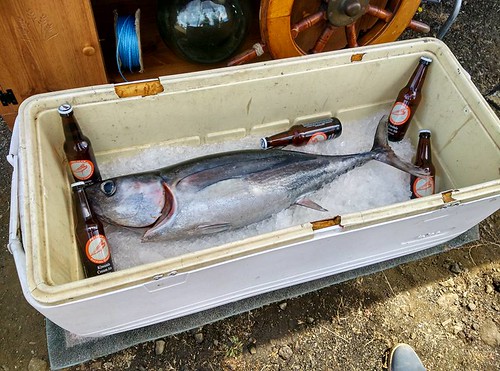
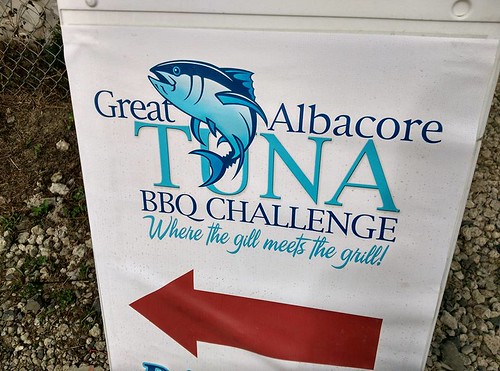
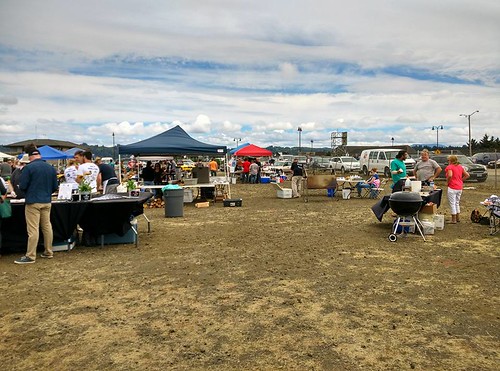
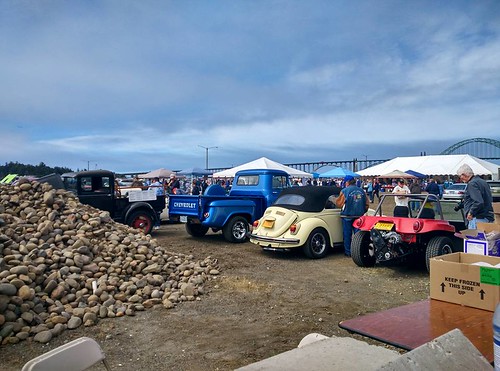
On Sunday, we attended the (now declared historic) Bernie Sanders for president rally in Portland. I personally never really keep up with politics and have never attended a political rally before. It was super fun, super tiring, and really inspiring. A lot of standing around, a lot of screaming and whoo-ing, a lot of emotions and near-tear moments.
And here we are, at my last week at Hatfield. It’s definitely bittersweet saying goodbye to the swallows that fly by my office window and swoop up under the roof and the amazing view by my window: PNW forested landscapes, a mudflat at low tide, and a bay at high.
I am attending the American Fisheries Society annual meeting next week in Portland, representing the Davis-Sacramento Student Subunit! So I won’t be at Hatfield during our week 10. However, I’m sure I’ll have plenty of photos from PDX to share next week. I’ve been working non-stop on my poster and final presentation for the Oregon Sea Grant Summer Scholar student symposium this upcoming Friday. I finally finished printing it!!!!!!!
We had our last EPA intern workshop today as well, talking about elevator speeches and practicing introducing yourself to a variety of different audiences. It was helpful considering I’ll be in those situations where you’re expected to introduce yourself in 30 seconds to a stranger, soon to be colleague, next week and even this Friday.
It’s crazy to think the next time I’ll be writing a blog is after I will be done presenting my OSG scholar work. Time has flown!
Applying Principles of Resilience (Part 2)
 In March, I posted a blog about three of seven resilience principles put forth by the Stockholm Resilience Centre and adapted to my research. Those principles were “maintain diversity and redundancy,” “manage connectivity,” and “manage slow variables and feedbacks.” In this post, I will describe the remaining four principles and how I adapted them to economic vulnerability to hazards.
In March, I posted a blog about three of seven resilience principles put forth by the Stockholm Resilience Centre and adapted to my research. Those principles were “maintain diversity and redundancy,” “manage connectivity,” and “manage slow variables and feedbacks.” In this post, I will describe the remaining four principles and how I adapted them to economic vulnerability to hazards.
Economic resilience to hazards is the ability of the local business community to handle natural hazards. By focusing on how resilience principles can be applied to that specific circumstance, we can identify targeted ways to increase resilience and therefore reduce the vulnerability of the business community. This post will look at the final four resilience principles, and how they apply to the more narrow focus of economic resilience to hazards.
The fourth principle is “foster complex adaptive systems thinking.” Many of the resilience principles are based on a systems perspective, a way of thinking that emphasizes relationships and unpredictability rather than individual elements that function as they have in the past. This principle highlights the importance of not just addressing issues through individual strategies based on systems thinking, but habitually making connections between challenges. From an economic resilience to hazards perspective, this focuses on explicitly considering the connections between different disciplines, types of infrastructure, and hierarchical levels. Finding ways to create solutions that address multiple problems takes creativity and collaboration that systems thinking supports.
The fifth principle is “encourage learning.” Gathering information from many sources helps both to provide more data for planning, and includes additional perspectives. This principle also encourages regular revisiting of strategies based on new information. It is easy to rely on traditional methods without evaluating them to see if they still serve. From an economic resilience to hazards perspective, this principle becomes “gather and share information about hazards resilience.” This focuses on information about how local businesses can better prepare to absorb and recover from disruptions.
The sixth principle is “broaden participation.” For the sake of efficiency or ease, those with the authority to make decisions often only include participation from experts, the majority, or those proactive enough to seek out opportunities. Our communities include many members who lack the time, resources, or context to participate through traditional outreach. These community members require more effort to engage with, but their participation provides more complete understanding of the issue and strengthens social fabric. From an economic resilience to hazards perspective, this becomes “engage under-represented populations.” These populations could be based on geographic or demographic characteristics. Reaching out to voices that have not been included before leads to more representative decisions and a stronger community.
The seventh and final principle is “promote polycentric governance systems.” This refers to governmental structures that can act independently and in a coordinated fashion so that key decisions can be made flexibly depending on the circumstances. From an economic resilience to hazards perspective, this becomes “share and clarify roles and responsibilities with partner organizations.” Beyond city, county, state and federal government agencies, there are many organizations that have an active role in economic development. By connecting these autonomous groups, they can plan better for collaborative efforts, avoid duplicated effort, and anticipate roles during an emergency.
These four principles focus on how organizations work towards their missions on a daily basis, as opposed to the first three principles, which focused more on specific hoped for outcomes. While all are important, complex adaptive systems thinking is absolutely foundational, and sets the others up for success beyond a single project.
August Already!? (Goals, Projects, and a Random Scientific Question)
Wow so much time has passed. I can’t believe the summer is getting ever closer to coming to an end. The past week or two I’ve been using my time wisely in Oregon. I’ve managed to attempt spear fishing and going into it I figured it would be difficult. I was correct in believing so, because swimming down 15-20ft into the dark unknown on a single breath all the while trying not to scare the fish once you’ve reached the bottom is nearly impossible for a newbie. With all the difficulty aside though, it was a rich experience and I plan on attempting it again after taking a few more snorkeling trips to gather some confidence in my diving abilities in low visibility waters. Something on my bucket list also water related is that while out here I’m going to go surfing and the next opportunity I get I’m taking it.
On the science end of things, crab data has been gathered and we are beginning to conduct analyses and have begun building the prototype stereocam rigs. There’s really only two weeks until our poster sessions, so the scrambling of trying to get projects done and putting the “final” product into a physical presentation will soon be among us.
Something totally unrelated to my crab/camera project, but I feel like is worth noting about science is that I recently had brought to my attention a thought. A philosophical question put into my mind by a movie. The movie “Chappie”, not to give too much away is about a police sentry robot in South Africa that is programmed with consciousness. Unlike most movies that portray robots enslaving our species or eradicating us entirely, Chappie brings up the question as to how we would potentially treat and raise this artificial intelligence and whether it would be morally considered a sentient subject with rights like you and I. You may be thinking that this is a far off thought that is merely fiction, but as we progress with technology we are fast approaching a time where this could be reality in the not so distant future. Some of the top minds in the world are already raising concerns over the topic like Stephen Hawking. What are your thoughts on this debatable topic? Although some parts of the movie are not for younger viewers, I suggest checking it out if you feel like acquiring some new “keeping you up at night” material to think about.
Theatre poster for the movie Chappie
If These Puns are Bad, Then Let Minnow!
Yet again, I find myself on Monday morning in a wetsuit heading out to Otter Rock Marine Reserve to collect SMURFs and sample the juvenile fish. I’ve decided this is one of my favorite jobs I’ve done so far with the Oregon Department of Fish and Wildlife. The start time is not too early, it’s a good way to start the day, and I get to swim in the ocean. No matter how cold or early, I would take any opportunity I could to get in the water and do some field work.
The day was very successful and Rosalyn was able to go with us, which made it a lot more fun. The day did not end after the field work however. There was a total of 275 fish that needed to be identified and measured. It took until about 8 pm, but we were able to finish and go to the local bar and sit down for a beer. It was a long day.
Something I have realized from this week is that I really want to go to grad school at some point. I think there is a lot to be learned in the field of marine biology and I even though I don’t know when I will go, I want to continue my education. I’ve been looking a lot of different places and even schools abroad as well. There are so many programs that look so interesting!
As the weekend rolled up, our plan of attack was to finally hike Cascade Head, which is one of the more popular hikes in Lincoln City. It was around 5 miles and had an amazing view at the top. I cannot get over how gorgeous Oregon really is and how much of it that I still have yet to explore. As the weekend calms down, I am spending the day relaxing and resting for the week ahead. I cannot believe that the end is now in sight. It seems like only a short while ago I was graduating from college and on my way to Newport.
Another update is that I get to attend the American Fisheries Society Conference in Portland in two weeks! I have never been to one before and am excited to be around people that are passionate about the same things that I am. It will also be a great way to end the internship and summer. I am hopeful for the future and so far this has solidified that I do really love working on the coast and in marine science.
Week Six: Bivalves and beach views
This past week was very interesting between working during the day and playing during the evening! At work, I finished searching for values for aragonite saturation and pH thresholds for bivalves. There were so many papers that had the impacts of ocean acidification for bivalves—mainly oysters (Crassostrea virginica and Crassostrea gigas) and mussels (Mytulis edulis). With so many papers, this particular literature review took longer than most of the others so it was basically the only thing I worked on this week! However, on Friday, my mentor and I went out on the estuary to monitor a rare estuarine plant that only occurs in Newport and Coos Bay in Oregon. It wasn’t blooming this week, so I think we’re going out again next week to see it in bloom. While we were out, we saw a dead seagull without a head, so that was a pretty interesting way to end the work week.
The social part of the week was quite eventful! On Monday we went blueberry picking at Siletz and made blueberry lemonade. I’ve made blueberry smoothies so often this past week. Also, on Thursday, the scholars and I went to the Oregon Sea Grant picnic and had a blast playing and ladder ball, walking on the beach, and eating delicious food! That evening we all went to karaoke with some REU interns. We also went to Yaquina Bay head and lighthouse on Friday after work. The view was great and the walk was refreshing.
On Saturday, Abby went up to Eugene for a wedding and Ron, Rosalyn, and I accompanied her to Eugene and explored the city that day. We went to the Saturday market, Buffalo Exchange, and the movie theater to see Inside Out. It was a packed and fun day. Today Rosalyn, Ron, and I went over the bridge to look at an Antique mall and then explored the Nye Beach district. Abby joined us for dinner at Nana’s Irish Pub. This past weekend the scholars and I also made a Newport bucket list of things to accomplish before the end of the summer. This list includes kayaking, glass blowing, hiking Cascade head, going to the wooden boat show, and going to Nana’s (which we already checked off the list). I’m looking forward to the next couple of weeks.
Mid-Summer Progress Report
How have I found myself in the middle of week SIX, already? I’m into the double digits with my interviews and have a very full calendar for the next few weeks. My original aim was to have interviews wrapped up by the end of week seven, but I’ve got some scheduling spilling over that deadline. This is making it ever more important that I keep up with interview transcriptions and analysis along the way, since I’ll be presenting a poster at our final symposium in week nine! With a decent number of interviews behind me, now, I’ve begun to see recurring commentary on certain successful elements of engaged research, and have heard some suggestions for improvement echoed by a few people. It’s all starting to come together, although I need to spend this next week better organizing all of this data in a format that will feed into my final report.
I have to give a quick shout-out to Ruby Moon after tagging along to her Shop the Dock program in the past week. It was great to see a program in action, and watch the engagement between community members and local industry through this direct marketing exchange. What a great activity – there was a huge crowd that came out to learn about navigating the docks!
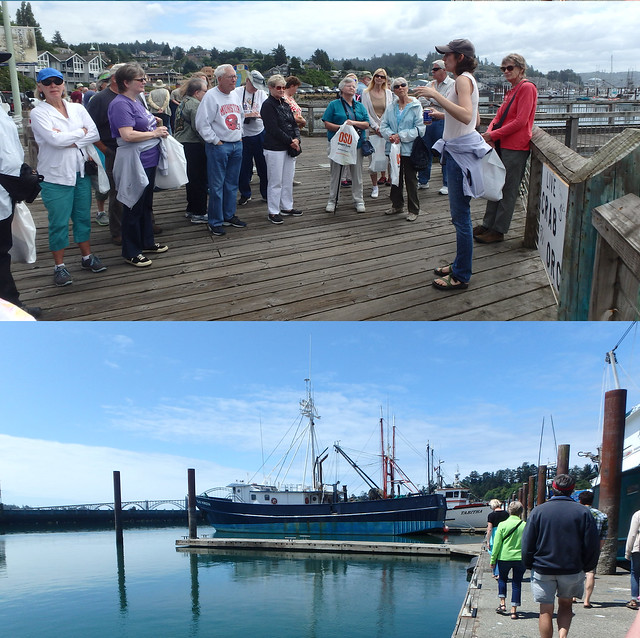
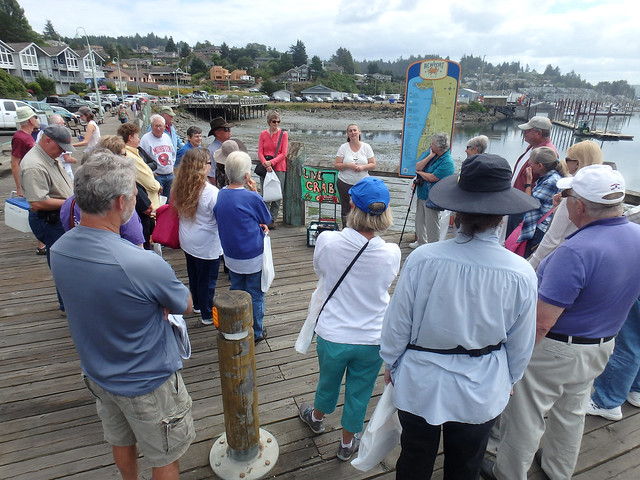 I also spent a lot of time thinking about science communication and engagement over the weekend during our mid-summer check-in. Miriah Kelly led an excellent workshop, and I enjoyed round-table discussions that were had throughout the morning. We talked about a lot that day, but here are a few things I jotted down that are good to remember and incorporate into my thinking: (1) Your identity as a scientist is built up through everything you’ve ever communicated and the positions you’ve taken on other research and issues. (2) In communicating your message, recognize and account for the fact that the general public often has stereotyped ideas of who scientists are and what they do. (3) You will often take a role as an information gatherer, generator, provider, or translator in your scientific work, but equally important are your abilities to be a good manager, listener, director, networker, facilitator, behavior changer, and passion generator (love that last one). After the morning workshop, we also had a chance to visit the Newport Aquarium as a group. I realized that this was everything I’d been previously missing out on in my museum and aquarium explorations: when you go with a bunch of other marine scientists, you learn SO MUCH MORE. The information panels are never quite enough to satisfy my curiosities, but I was really happy to hear my co-scholars and mentors share their specific knowledge about the species we were seeing throughout the exhibits that day. We also ended the mid-summer check in well with a barbecue, camping, and incredible sunset at Beverly Beach, just up the coast. And, as you’ll notice in the picture below, only a bunch of marine scientists can be found staring at the ground in front of a such a beautiful sunset :) Speaking of such, does anyone have thoughts on what those pink, gooey clumps are that we found strewn across the sand (see photo below)? We were stumped. Anyhow, it was wonderful to spend time with the other summer scholars and hear about their interests and experiences in marine systems.
I also spent a lot of time thinking about science communication and engagement over the weekend during our mid-summer check-in. Miriah Kelly led an excellent workshop, and I enjoyed round-table discussions that were had throughout the morning. We talked about a lot that day, but here are a few things I jotted down that are good to remember and incorporate into my thinking: (1) Your identity as a scientist is built up through everything you’ve ever communicated and the positions you’ve taken on other research and issues. (2) In communicating your message, recognize and account for the fact that the general public often has stereotyped ideas of who scientists are and what they do. (3) You will often take a role as an information gatherer, generator, provider, or translator in your scientific work, but equally important are your abilities to be a good manager, listener, director, networker, facilitator, behavior changer, and passion generator (love that last one). After the morning workshop, we also had a chance to visit the Newport Aquarium as a group. I realized that this was everything I’d been previously missing out on in my museum and aquarium explorations: when you go with a bunch of other marine scientists, you learn SO MUCH MORE. The information panels are never quite enough to satisfy my curiosities, but I was really happy to hear my co-scholars and mentors share their specific knowledge about the species we were seeing throughout the exhibits that day. We also ended the mid-summer check in well with a barbecue, camping, and incredible sunset at Beverly Beach, just up the coast. And, as you’ll notice in the picture below, only a bunch of marine scientists can be found staring at the ground in front of a such a beautiful sunset :) Speaking of such, does anyone have thoughts on what those pink, gooey clumps are that we found strewn across the sand (see photo below)? We were stumped. Anyhow, it was wonderful to spend time with the other summer scholars and hear about their interests and experiences in marine systems. 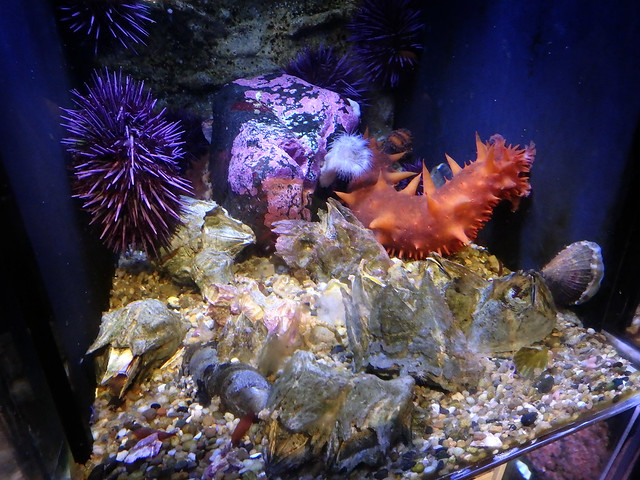
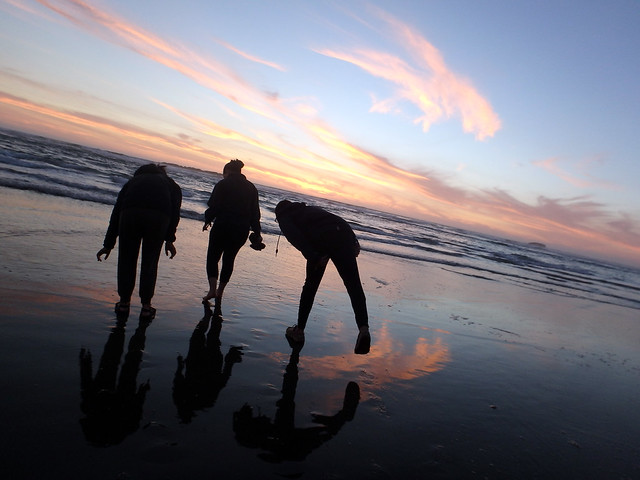
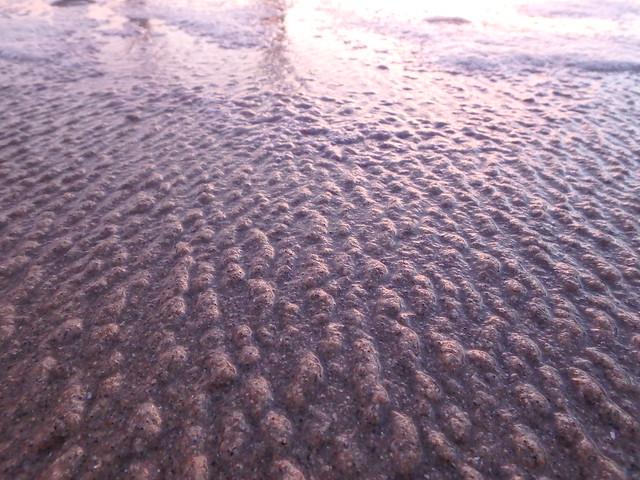
Onward and upward! It should be a crazy but incredibly interesting week as interviews continue.
Oregon Coast Economic Summit
Next month, there will be a number of interesting panels at the 4th Annual Oregon Coast Economic Summit (OCES), which is sponsored by the Oregon Coastal Caucus. See the invitation below:

Greetings,
It is with great pleasure and much excitement that the Oregon Legislative Coastal Caucus invites you attend the 4th Annual Oregon Coast Economic Summit (OCES), which will take place on Wednesday, August 26th and Thursday, August 27th at Spirit Mountain Casino in Grande Ronde. This year’s theme will highlight the collaboration necessary to help young people prepare for our region’s and our state’s rapidly changing economy.
The Summit will feature highly informative panel discussions on a wide range of topics with a focus on the Oregon coast’s unique economic diversity.
We are also pleased to announce the return of the very popular “Taste of Oregon,” a reception that allows attendees to sample locally made food and beverages from the Oregon coast, including products of the Dungeness Crab Commission, Pelican Brewery, Kruse Farms, 7 Devils Brewing Co., Tillamook Cheese, and many more.
The attendance of more than 400 policy decision makers from federal, state, local and tribal governments, as well as the numerous educators and representatives from the private sector promise to make this Summit a vital think tank for the exploration of new ideas and new approaches to problems and challenges that face our communities.
Registration for Oregon Coast Economic Summit
Please note that a block of rooms has been reserved for guests at Spirit Mountain Casino for Wednesday and Thursday nights at a special group rate. In order to secure a room at the discounted rate, please call the Lodge at Spirit Mountain Casino at 503-879-2350 for August Summit. Registration Code 603248.
*******



Moray-ming for Engagement
Last Friday marked the halfway point for our Summer Scholars. In honor of the occasion, we hosted a check-in event in Newport. With five short weeks remaining, we wanted to see their personal and professional progress so far, and (as you may not be able to tell from my poorly-punned title) aim for more engagement between them. The morning consisted of a science communication workshop, spectacularly led by Sea Grant’s Miriah Kelly. The morning included a quick opportunity for students to present their work so far. They also drew their interesting and diverse mental models of scientific communication (#scicomm), which are now on display in the Sea Grant office in Corvallis.
After the presentations and a quick feedback session over lunch, the scholars headed to the aquarium to see some science communication in action (and have a little fun on the side). Austin got a kick out of the giant green moray eel in the new shipwrecks exhibit.
We rounded out the day with a delicious BBQ at Beverly Beach, and left the scholars to camp overnight in the park.
The day seemed to be a hit with the scholars. It was a long one, but it was a nice balance of productivity and learning with fun and relaxation. The students got quite a bit out of the communication workshop- we had some great discussions about advocacy on social media and the purpose of communication, among other things. Some highlights of what I learned:
- Figure out who your receiver is. Knowing their values will help you frame your message.
- Get feedback from your receiver. This is just as important as the message.
- Provide multiple layers of information so that people can get to their own desired depth of knowledge.
- The end goal of science communication is a behavior change. Focusing your message will help achieve this.
You can follow the scholars here on the blog and/or on Twitter at #OSGscholars. You can follow me @SarahLHeidmann.

